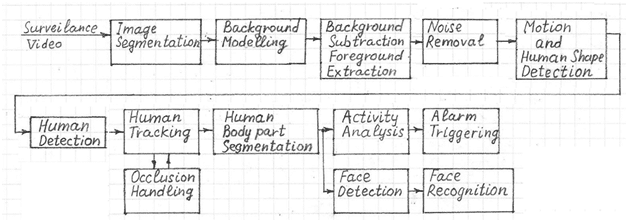Automatic human detection and tracking is an important feature of video surveillance systems. It can improve a system’s performance in fields such as security, safety, human activity monitoring etc. Human detection systems can have different goals such as detecting the presence of humans, recognition of abnormal behavior (falls, climbing, running, etc.), identification of specific individuals, etc.

For human detection and tracking, the surveillance system should represent the video as a sequence of still images. Frame subsampling could be done. For this sequence, the background has to be modeled and then subtracted, and the foreground extracted. Reduction of noise and image compression artifacts can be very useful. Then, human detection may be done based on shape detection and motion from previous frames. From this information, regions of interest (ROI) can be identified.
One popular technique for human shape classification is histogram of oriented gradients (HOG). Once the ROI is classified and human detection is confirmed, human tracking can start. Human tracking has to be able to handle occlusion events. Finally, human activity analysis can happen. For that, human body parts must be classified and labeled. Based on human body part motion, the human activity analysis can happen. If abnormal behavior is detected, an alarm can be triggered. To identify individuals, face detection and recognition can also be applied.